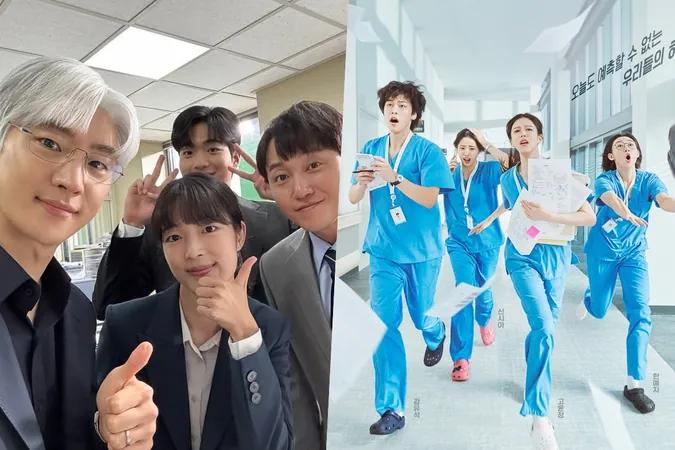
Shocking Yale Study Reveals Major Gaps in Chronic Back Pain Diagnosis Among Physicians!
2025-04-02
Author: Li
Shocking Yale Study Reveals Major Gaps in Chronic Back Pain Diagnosis Among Physicians!
A groundbreaking study from the prestigious Yale School of Medicine has unveiled alarming deficiencies in the medical community's ability to recognize axial spondyloarthritis, a debilitating chronic inflammatory disorder often misdiagnosed. The findings, recently published in *The Journal of Rheumatology*, indicate that many physicians treating chronic back pain lack the necessary expertise to identify this condition, endangering patient health.
Current statistics show that axial spondyloarthritis affects approximately 1.4% of the population, with symptom onset typically occurring in young adulthood. Astonishingly, it can take patients eight to 14 years to receive a proper diagnosis. Abhijeet Danve, MD, MHS, an associate professor at Yale and director of the Yale Spondyloarthritis Program, highlighted that failure to diagnose can lead to irreversible spinal damage and complications affecting other organs, including increased risks of heart disease, stroke, and hypertension.
The study aimed to investigate the awareness and practices of primary care physicians and specialists regarding this condition and uncover barriers to referrals for rheumatology care. To accomplish this, researchers distributed a survey to various medical practitioners across the United States who frequently encounter patients with chronic back pain. This cohort included professionals from family and internal medicine, spine surgery, orthopedics, pain management, and physical medicine.
In total, 750 physicians participated in the survey. While 75% of non-rheumatologists recognized inflammatory back pain and half were aware of axial spondyloarthritis, all surveyed rheumatologists exhibited familiarity with both conditions. Yet, despite this awareness, only 40% of non-rheumatologists consistently assessed for signs of axial spondyloarthritis, a stark contrast to the rheumatology experts where nearly all routinely did so.
A key element of diagnosis involves appropriate imaging, specifically pelvic X-rays, which should be the first test ordered for individuals suspected of having axial spondyloarthritis. Surprisingly, only half of the non-rheumatologist physicians were aware of this vital protocol. Danve expressed concern over these alarming statistics: “If half of the physicians don’t know which imaging test to order, patients will continue to suffer undiagnosed, leading to delayed treatment and severe consequences.”
To combat this dire situation, Danve advocates for targeted educational initiatives, especially focusing on family and internal medicine specialists who most frequently serve as patients' first point of contact.
Moreover, a remarkable finding from the study indicated a strong desire among both non-rheumatologists (81%) and rheumatologists (97%) for formal referral guidelines to streamline the diagnosis and treatment process. In response, Danve and colleagues within the Spondyloarthritis Research and Treatment Network are currently developing national guidelines aimed at improving referral practices for chronic back pain patients to rheumatologists.
The urgency of this study cannot be overstated, as timely and accurate diagnosis of axial spondyloarthritis is essential for preventing long-term damage and ensuring better patient outcomes. With the right education and guidelines, the medical community can finally tackle this elusive condition effectively. Don't let your back pain go untreated—stay informed and advocate for your health!

 Brasil (PT)
Brasil (PT)
 Canada (EN)
Canada (EN)
 Chile (ES)
Chile (ES)
 Česko (CS)
Česko (CS)
 대한민국 (KO)
대한민국 (KO)
 España (ES)
España (ES)
 France (FR)
France (FR)
 Hong Kong (EN)
Hong Kong (EN)
 Italia (IT)
Italia (IT)
 日本 (JA)
日本 (JA)
 Magyarország (HU)
Magyarország (HU)
 Norge (NO)
Norge (NO)
 Polska (PL)
Polska (PL)
 Schweiz (DE)
Schweiz (DE)
 Singapore (EN)
Singapore (EN)
 Sverige (SV)
Sverige (SV)
 Suomi (FI)
Suomi (FI)
 Türkiye (TR)
Türkiye (TR)
 الإمارات العربية المتحدة (AR)
الإمارات العربية المتحدة (AR)